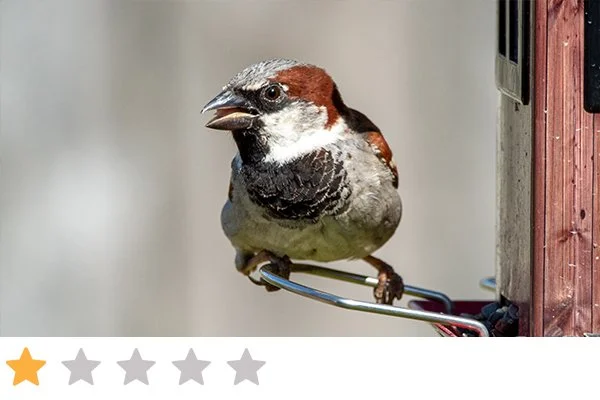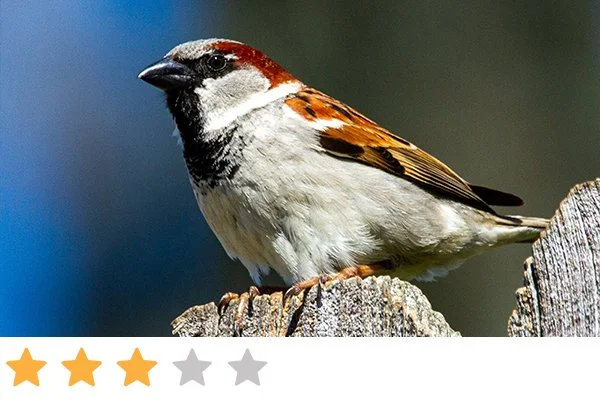
We’d like to change your mind about house sparrows.
“Boring.”
“Invasive.”
“Trash birds.”
“Vicious little monsters.”
Not everyone has nice things to say about house sparrows (Passer domesticus). But at Wild Animal Initiative, we love these little birds with a big reputation. To us, they’re on the cutting edge of groundbreaking scientific research that could ultimately make the world a better place for many different animals.
This winter, we’re launching a field research project to understand how varying environmental conditions such as water availability, noise level, and land use affect the welfare of the house sparrow. Our research team will record audio and video at a variety of sites where house sparrows live, and then analyze their behavior and vocalizations.
It’s the first study of its kind and will help advance the emerging field of wild animal welfare science.
By welfare, we mean the aggregate quality of an individual’s subjective experiences over a given time period. This can also be called “well-being” or “quality of life,” and it’s a highly neglected research area in the biological sciences. While other fields have historically asked questions about how to preserve species or habitats, wild animal welfare science asks questions about what life is like for individual animals, and how we can help them responsibly and at scale.
The house sparrow research project has the potential to produce groundbreaking data that will be useful to scientists in numerous fields, including urban ecology, animal behavior, and climate science. We expect the data to be relevant to scientists who study additional species too, such as other sparrows or songbirds.
We hope research like this will influence policies on urban development and wildlife management so that animal welfare is taken into consideration.
We at Wild Animal Initiative envision a future in which even house sparrows — a species that is typically ignored at best, and despised at worst — will be understood and valued as individuals. A world where people want to help wild animals like these common birds, and they’re equipped with the research they need to do so responsibly. Each research project like this one takes us one step closer. Donate to accelerate science that helps wild animals.
So what do you think? How many stars would you give a house sparrow?
Read what others have said about house sparrows:
Rate & Review House Sparrows
Doug C.
South of Houston suburbs, house sparrows are infrequent feeder visitors. They feed and leave when larger doves and blue jays show up to feed.
Year-round visitors
Stephen W.
I have a lot of house sparrows visit my yard all year along with over 100 other species of birds. I feed them all. I also have many squirrels, rabbits, opossum and raccoons. My yard is alive and I love it.
Illegal eviction
Barb Y.
These vicious little monsters basically taunted my backyard bluebirds from their former home 👎
NOT a bottomless brunch
Blake J.
I JUST filled the feeders this morning and the house sparrows already cleaned me out! Seed is $20 a bag!!1 😩
Nothing to see
Ash T.
I want to add beautiful birds to my life list. Every chirp today was just another house sparrow! They’re SO boring. 🥱
Basic but cute
John K.
They’re not bright and colorful like the cardinals or bluejays but they’re fun to watch hopping around the backyard!
Share your review on social media:
Donate to advance this critical research.
There’s much more work to be done. When you donate to Wild Animal Initiative, you make it possible for us to continue building an academic field dedicated to critical research in wild animal welfare.










